-
 Bitcoin
Bitcoin $118000
0.31% -
 Ethereum
Ethereum $3560
-0.99% -
 XRP
XRP $3.435
-0.76% -
 Tether USDt
Tether USDt $1.000
-0.01% -
 BNB
BNB $731.8
-0.96% -
 Solana
Solana $177.3
-0.64% -
 USDC
USDC $0.9999
-0.04% -
 Dogecoin
Dogecoin $0.2419
2.59% -
 TRON
TRON $0.3205
-1.58% -
 Cardano
Cardano $0.8278
0.18% -
 Hyperliquid
Hyperliquid $44.64
0.22% -
 Stellar
Stellar $0.4648
-1.54% -
 Sui
Sui $3.794
-2.00% -
 Chainlink
Chainlink $18.31
2.04% -
 Hedera
Hedera $0.2672
-0.49% -
 Avalanche
Avalanche $24.26
1.57% -
 Bitcoin Cash
Bitcoin Cash $506.9
-1.63% -
 Shiba Inu
Shiba Inu $0.00001474
-0.40% -
 UNUS SED LEO
UNUS SED LEO $8.991
0.23% -
 Litecoin
Litecoin $103.8
0.28% -
 Toncoin
Toncoin $3.183
-2.68% -
 Polkadot
Polkadot $4.298
-0.09% -
 Uniswap
Uniswap $10.08
-1.02% -
 Monero
Monero $325.5
0.60% -
 Ethena USDe
Ethena USDe $1.001
-0.01% -
 Bitget Token
Bitget Token $4.886
-1.39% -
 Pepe
Pepe $0.00001311
-1.56% -
 Dai
Dai $1.000
0.01% -
 Aave
Aave $316.5
-1.08% -
 Cronos
Cronos $0.1219
0.89%
Will a spot ETH ETF increase Ethereum's price volatility?
The launch of a spot ETH ETF could boost institutional adoption, increase liquidity, and influence Ethereum's price through ETF inflows and outflows.
Jul 15, 2025 at 04:42 am
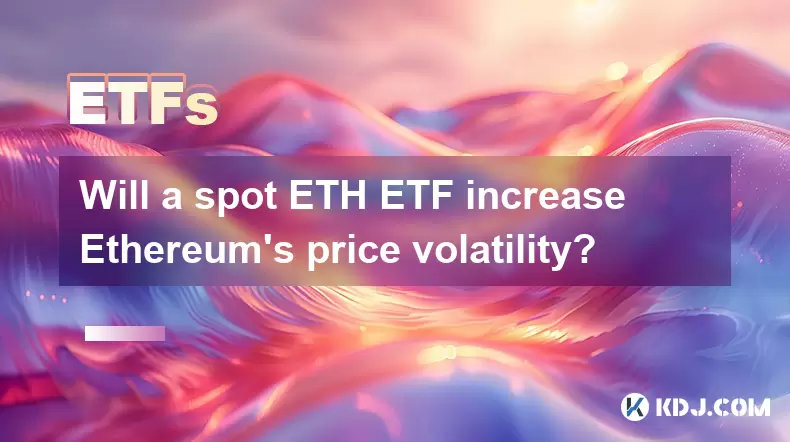
Understanding Spot ETH ETFs and Their Mechanism
A spot Ethereum exchange-traded fund (ETF) is a financial product that directly holds Ethereum as its underlying asset. Unlike futures-based ETFs, which derive their value from Ethereum futures contracts, spot ETFs are backed by actual ETH stored in custody. This direct linkage to the physical cryptocurrency makes spot ETFs more transparent and potentially more appealing to institutional investors.
The mechanism of a spot ETH ETF involves an issuer purchasing and securely storing Ethereum on behalf of investors. Shares of the ETF are then traded on traditional stock exchanges, allowing investors to gain exposure to Ethereum without dealing with wallet management or blockchain transactions. The introduction of such products often brings increased liquidity and broader market participation.
One critical aspect of this structure is the creation and redemption process, where authorized participants can exchange baskets of shares for actual ETH and vice versa. This helps maintain price alignment between the ETF and the underlying asset, minimizing arbitrage opportunities and ensuring market efficiency.
The Role of Institutional Investors in Spot ETF Markets
Institutional investors play a significant role in the dynamics of ETF trading. Once a spot ETH ETF receives regulatory approval, it opens the door for pension funds, mutual funds, and other large entities to invest in Ethereum without directly holding the digital asset. These institutions typically manage vast sums of money and operate under strict compliance frameworks, making ETFs a safer and more regulated entry point into crypto markets.
As institutional demand increases, so does the inflow of capital into the ETF. This influx can lead to increased buying pressure on Ethereum itself, especially during periods when the ETF is being created. Conversely, if redemptions rise—such as during market downturns—it could result in selling pressure on ETH, affecting its market price.
Moreover, institutional involvement tends to bring higher trading volumes and tighter bid-ask spreads, which may reduce short-term volatility. However, it also introduces new types of risk, particularly related to macroeconomic factors influencing traditional markets, which can spill over into crypto via ETF-linked investments.
How ETF Trading Volumes Influence Ethereum Price Action
The launch of a spot ETH ETF typically correlates with heightened trading activity. As more investors enter through ETF vehicles, the volume of ETF shares traded on exchanges rises. This surge in interest can indirectly impact Ethereum's market behavior due to the necessity of buying and selling ETH to back ETF shares.
During high-volume days, especially when there is net inflow into the ETF, the custodian must purchase additional ETH to back the newly issued shares. This can create temporary upward pressure on Ethereum’s price, sometimes leading to sharp movements. Similarly, during sell-offs, ETF outflows may trigger ETH liquidation by the custodian, contributing to downward trends.
It's crucial to monitor net flows into and out of the ETF rather than just price changes alone. Net inflows indicate sustained investor confidence, while persistent outflows might signal market skepticism or profit-taking, both of which can influence Ethereum’s volatility levels.
Liquidity Provision and Arbitrage Opportunities in Spot ETH ETFs
Liquidity providers and arbitrageurs play a pivotal role in maintaining equilibrium between the ETF share price and the actual ETH spot price. When the ETF trades at a premium or discount relative to Ethereum’s market price, these actors step in to capitalize on the discrepancy, restoring balance.
For instance, if the ETF share price exceeds the net asset value (NAV) per share, arbitrageurs will buy ETH and create new ETF shares to sell at the higher price. Conversely, if the ETF trades below NAV, they redeem shares for ETH and sell it on the open market. These mechanisms help stabilize the ETF and ensure it remains closely tied to Ethereum’s real-time value.
However, during periods of extreme volatility or low liquidity in either the ETF or the ETH market, these arbitrage processes may not function efficiently. This can lead to temporary dislocations, increasing the perceived volatility of both the ETF and the underlying asset.
Regulatory Impact on ETF Launches and Market Stability
Regulatory approvals, particularly from bodies like the U.S. Securities and Exchange Commission (SEC), significantly influence the stability and perception of spot ETH ETFs. A green light from regulators signals legitimacy and encourages broader adoption, often resulting in heightened investor confidence.
Conversely, rejections or delays can cause uncertainty and dampen market sentiment, potentially triggering sell-offs. The anticipation surrounding regulatory decisions can generate speculative behavior, contributing to short-term price swings even before any ETF begins trading.
Additionally, regulatory frameworks dictate how ETFs are structured, including custody requirements, reporting standards, and transparency measures. These elements collectively shape how the market absorbs and reacts to ETF-related Ethereum flows, ultimately affecting price volatility.
Potential Volatility Scenarios Post-ETF Approval
Following the launch of a spot ETH ETF, several scenarios could unfold regarding Ethereum’s price volatility:
In a bullish scenario, strong institutional demand leads to consistent inflows into the ETF, supporting steady accumulation of ETH by custodians. This environment could result in reduced volatility due to stabilized demand.
In a bearish scenario, negative macroeconomic news or regulatory setbacks cause ETF outflows, forcing custodians to sell ETH. Such events may amplify downside moves and increase short-term volatility.
A neutral scenario would involve balanced inflows and outflows, with the ETF functioning smoothly without major disruptions to Ethereum’s price action. Over time, this could lead to Ethereum behaving more like a mature asset class with predictable patterns.
Each scenario hinges on how investors react, how efficiently arbitrage functions, and the broader economic context surrounding crypto markets.
Frequently Asked Questions
Q: Does a spot ETH ETF guarantee Ethereum's price appreciation?
No, a spot ETH ETF does not inherently guarantee price appreciation. While it may attract more capital and improve accessibility, Ethereum's price still depends on market dynamics, investor sentiment, macroeconomic conditions, and regulatory developments.
Q: Can spot ETH ETFs be used for short-term trading strategies?
Yes, spot ETH ETFs can be suitable for short-term trading strategies due to their exposure to real-time Ethereum prices. Traders can use them to speculate on price movements without managing private keys or engaging with crypto exchanges directly.
Q: Are spot ETH ETFs available globally or limited to specific jurisdictions?
Currently, availability varies by region. Countries like Canada and some European nations have approved spot ETH ETFs, while others, including the United States, are still evaluating regulatory frameworks.
Q: How do spot ETH ETFs differ from Ethereum futures ETFs?
Spot ETH ETFs hold actual Ethereum, providing direct exposure to the asset. Ethereum futures ETFs track futures contracts, which can deviate from the spot price due to contango or backwardation effects.
Disclaimer:info@kdj.com
The information provided is not trading advice. kdj.com does not assume any responsibility for any investments made based on the information provided in this article. Cryptocurrencies are highly volatile and it is highly recommended that you invest with caution after thorough research!
If you believe that the content used on this website infringes your copyright, please contact us immediately (info@kdj.com) and we will delete it promptly.
- Meme Coins Mania: Presales and Charts Spiking in 2025
- 2025-07-20 02:30:11
- Rick Harrison, the Titanic Coin, and a Deal That Sank
- 2025-07-20 02:30:11
- American Eagle Palladium Coin Set for September 4 Release: What to Expect
- 2025-07-20 00:35:12
- FloppyPepe: Could This Meme Coin Be Your Ticket to Crypto Millionaire Status with a 15,800% ROI?
- 2025-07-20 00:50:12
- Ethereum's 2025 ATH: Could These 20x Tokens Be Your Golden Ticket?
- 2025-07-20 00:35:12
- Solana, Altcoin Bets, and the Next Big Thing: What's the Play?
- 2025-07-20 01:15:12
Related knowledge
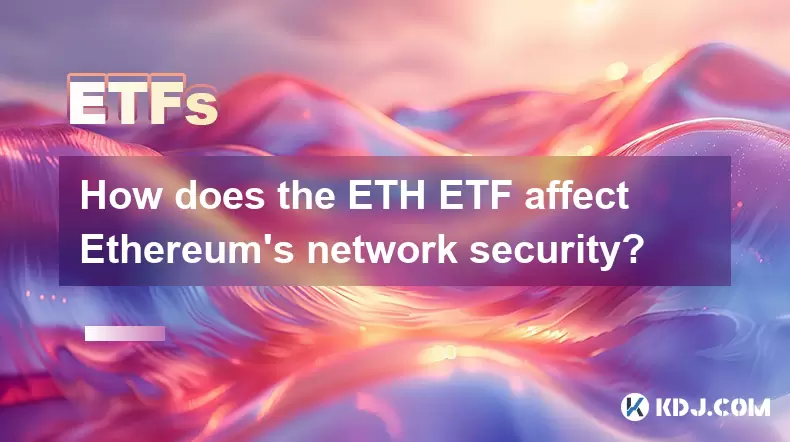
How does the ETH ETF affect Ethereum's network security?
Jul 17,2025 at 01:29pm
Understanding the ETH ETF ConceptAn Ethereum Exchange-Traded Fund (ETH ETF) is a financial product that allows investors to gain exposure to Ethereum ...
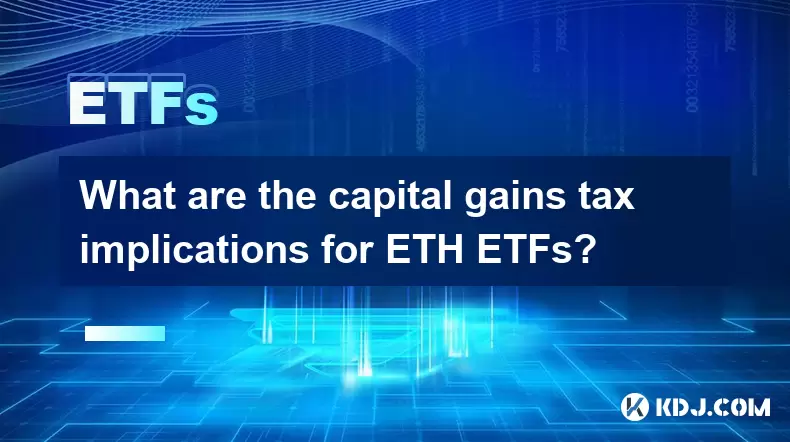
What are the capital gains tax implications for ETH ETFs?
Jul 18,2025 at 08:00am
Understanding Capital Gains Tax in Cryptocurrency InvestmentsCapital gains tax is a tax imposed on the profit realized from the sale of an asset that ...
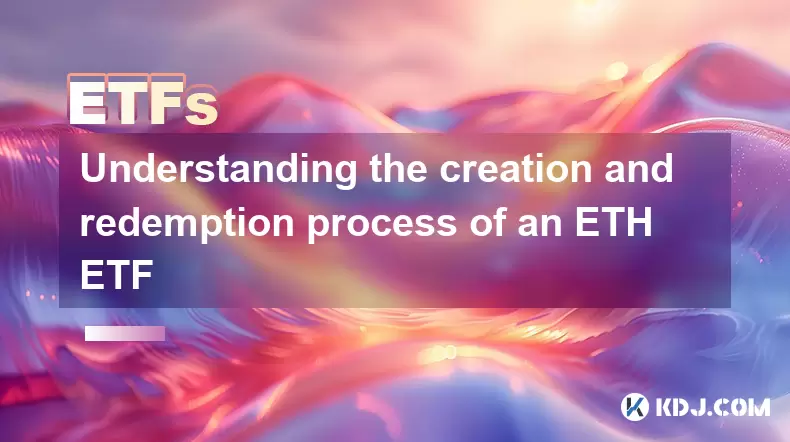
Understanding the creation and redemption process of an ETH ETF
Jul 19,2025 at 07:36am
What is an ETH ETF?An ETH ETF (Ethereum Exchange-Traded Fund) is a financial product designed to track the price of Ethereum without requiring investo...

How to analyze which ETH ETF is the best choice
Jul 19,2025 at 05:01pm
Understanding ETH ETFs and Their RelevanceEthereum Exchange-Traded Funds (ETFs) have emerged as a popular investment vehicle for those seeking exposur...
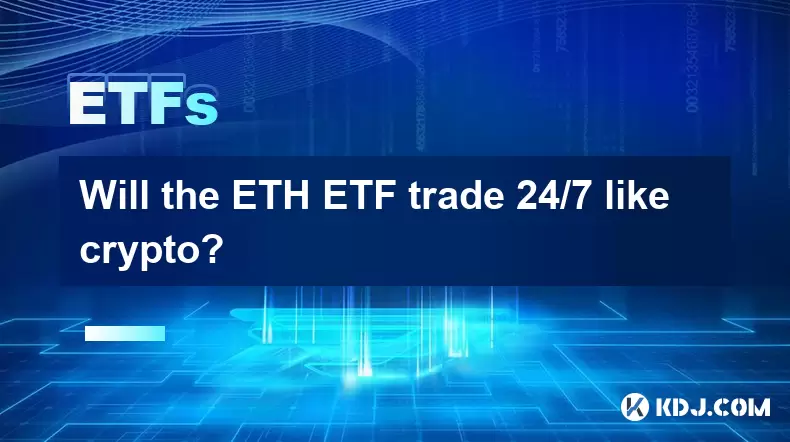
Will the ETH ETF trade 24/7 like crypto?
Jul 18,2025 at 10:00am
Understanding the ETH ETF and Its Trading HoursThe Ethereum Exchange-Traded Fund (ETH ETF) is a financial product that allows investors to gain exposu...
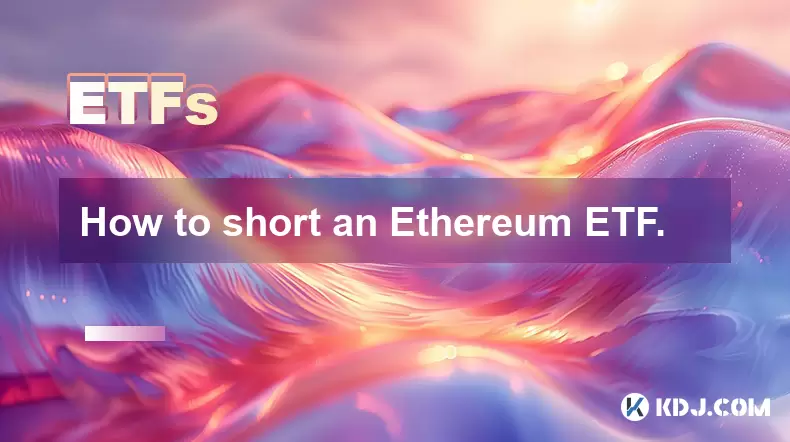
How to short an Ethereum ETF.
Jul 17,2025 at 05:43pm
Understanding the Concept of Shorting an Ethereum ETFShorting an Ethereum ETF involves betting against the price of Ethereum through a specific exchan...

How does the ETH ETF affect Ethereum's network security?
Jul 17,2025 at 01:29pm
Understanding the ETH ETF ConceptAn Ethereum Exchange-Traded Fund (ETH ETF) is a financial product that allows investors to gain exposure to Ethereum ...

What are the capital gains tax implications for ETH ETFs?
Jul 18,2025 at 08:00am
Understanding Capital Gains Tax in Cryptocurrency InvestmentsCapital gains tax is a tax imposed on the profit realized from the sale of an asset that ...

Understanding the creation and redemption process of an ETH ETF
Jul 19,2025 at 07:36am
What is an ETH ETF?An ETH ETF (Ethereum Exchange-Traded Fund) is a financial product designed to track the price of Ethereum without requiring investo...

How to analyze which ETH ETF is the best choice
Jul 19,2025 at 05:01pm
Understanding ETH ETFs and Their RelevanceEthereum Exchange-Traded Funds (ETFs) have emerged as a popular investment vehicle for those seeking exposur...

Will the ETH ETF trade 24/7 like crypto?
Jul 18,2025 at 10:00am
Understanding the ETH ETF and Its Trading HoursThe Ethereum Exchange-Traded Fund (ETH ETF) is a financial product that allows investors to gain exposu...

How to short an Ethereum ETF.
Jul 17,2025 at 05:43pm
Understanding the Concept of Shorting an Ethereum ETFShorting an Ethereum ETF involves betting against the price of Ethereum through a specific exchan...
See all articles

























































































